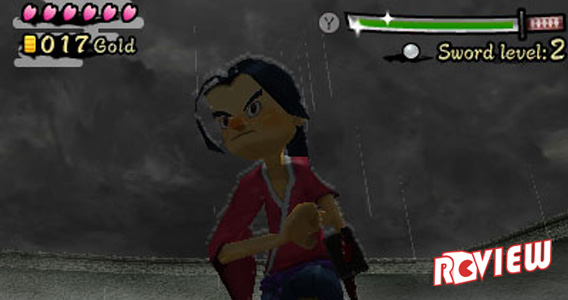
When surrounded by a horde of sword wielding villains, the key is to remain calm and wait for the perfect moment to strike. Eventually, one of those foes will grow impatient and bellow a battle cry while charging toward you, and just as the steel of his blade turns red, that perfect moment will reveal itself, at which point you may take a quick evasive sidestep before swiftly unleashing your own blade to feast on blood.
The action will pause for a moment before the villain doubles over with a cry and vanishes, possibly leaving behind coins as you sheath your sword and await the next opponent foolish enough to try a similar tactic.
Sakura Samurai is never long for providing another adversary either, all of them determined to prevent your quest to save Princess Cherry Blossom and return peace to the land. But for a game overflowing with waves of opponents, an intimate one-on-one battle system makes every fight a dance of patience and precision that offers a chance to mimic the calm and collected spirit of an anime samurai.
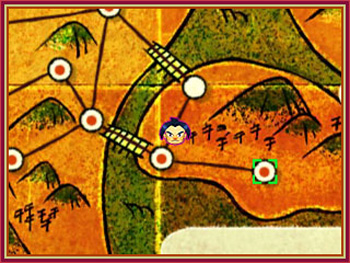
Answering the call to save the Princess without hesitation or elaborate explanation, players are presented with a world map littered with stage points, requiring that each one be cleared in succession to reveal the path forward. Entering these stages drops players into the scenic Japanese countryside, where various formations of enemies await the chance to end this quest, and quickly form into intimidating clusters around the player’s position while taking turns striking out in real time.
Enemies may charge at the player from a distance, or move in closer for quicker swings, and after attacking, an enemy will often back away to allow comrades a chance to play. The camera will pivot around until an enemy initiates an attack, and players can attempt to influence this process by dashing toward their preferred opponent, able to block incoming attacks as well as initiate their own. Striking enemies prematurely will often result in the player’s own attacks being blocked however, and has a nasty tendency of wearing down the Sakura Sword.
Players can achieve quick single strikes against enemies when their guard is down before a strike, but evading enemy attacks to gain a counterstrike opportunity is the key ingredient to success in combat. As an enemy prepares to strike, their blade will briefly flash red, indicating a precious window in which players can evade in any direction, and in turn land two quick blows with their sword.
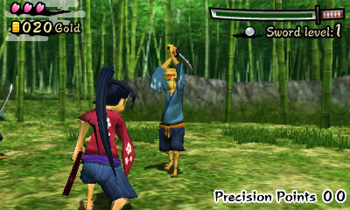
To shake up the process, later enemy encounters will also offer yellow flashes, indicating multiple strikes that require more drawn out evasive measures. Evasions also add to a special strike gauge, which will allow players to execute a more powerful attack on multiple enemies when filled. Adding to the learning curve, it becomes necessary to watch for enemy gestures that indicate the type of attack about to occur. Some enemies may attack from the side and require a side-dash evasion, but may also strike forward and require the player to fall back evasively before attempting to charge forward for a counterstrike.
The variation of attack patterns continually evolves as players travel along the ancient road, adding armored enemies that wield heavy swords and extended javelins. Eventually archer opponents are added as well, making it necessary to dodge arrows, though sometimes archers can be helpful given their habit of firing at your position regardless of whether their own comrades are blocking the shot. There are also ninja enemies that will buzz around the screen while tossing out bombs and throwing stars.

Stages draw easy water from the well of potential formations, which went a long way in keeping me engaged in a process that was essentially asking that I simply clear out nests of enemies repeatedly – a task that never changes, with players growing stronger but still executing the same maneuvers throughout the game. But the experience didn’t feel like the grind that approach suggests, with each stage offering potential surprises, and the act of reacting to enemy attacks continually challenging my reflexes. It’s easy to approach a stage prepared, even knowing the set stage formation of enemies due to replays, but the play of evasion and precision strikes keeps the experience from wearing thin as quickly as one might expect.
With all of the combat details out of the way, it’s hard to believe I haven’t even discussed a critical element of evasion yet, but here we are.
Aside from saving your hearts, a successful evasion also rewards players with precision points, which serve as an additional layer of currency. With each evasion, a chain of precision points builds, and players can carry that chain into each new and revisited area. However, the chain will reset to zero when the player is struck by an enemy or has one of their own attacks blocked, which may make you question what the point is, but rest assured there is one.
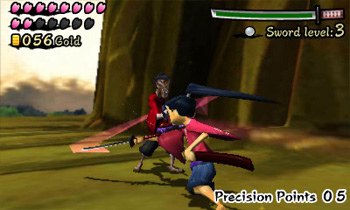
The value of precision points is found within villages, where players can visit the item shop and sell their precision scores to the vendor, who keeps a record of your highest precision chain on the store shelf. An interesting gamble presents itself in asking the player to wager how long they are willing to carry the chain before selling it, and that transaction becomes an essential means of coin collecting later in the game.
I found it necessary to return to earlier areas and evade easier enemies repeatedly in order to trade higher chains for much needed cash.
The monetary burden of the game primarily rests on the desire to upgrade the Sakura Sword by having the local swordsmith forge a higher level blade, which is the most expensive action within the game. Cheaper concerns include sharpening stones, which are needed in battle when your blade dulls from blocked attacks, as well as local expenses such as food for the journey and healing hotel visits where progress can be saved.

There are also items that augment your combat possibilities and are handled aptly in battle via the dpad, such as daggers that can be thrown at enemies from a distance, and frogs that can be tossed at enemies to distract them long enough to break their defense. The two most expensive items in the game are a robe that will shield players from a certain amount of attacks, and an amulet that renews your health should you fall in battle.
Each of the game’s three over-world areas offers a village with identical resources, save for variations on a stamp collecting mini-game street challenge, and the ability to raise your sword level.
Clearing all the stages of an area opens the path to the local fortress, where multiple waves of enemies stand between players and an area boss that will put tactics to the test with complex attack patterns. Thankfully, each cleared stage along the way rewards players with half a heart, and two halves naturally add an additional container count so that players grow stronger while progressing. Additional sympathy is shown when players perish within a stage, returning to the world map to find the game’s friendly Kappa character marking a stage where enemies will give more coins when defeated to help get you back on track.
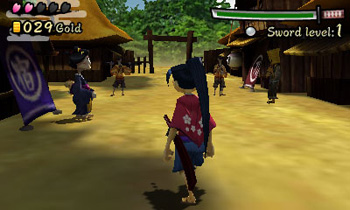
The strategy is straightforward, but no matter how many patterns I learned, it was still easy to get caught off guard. The variation on attack patterns from all enemies means that you can never relax your attention to subtle details, separating this release from the more typical hack and slash style of ninja games typically offered.
I can’t readily the recall the last swordfight where I had time to squint at an opponent before each strike – a curious spaghetti western moment before each round of samurai Punch-Out!! occurs. The overwhelming need to pay attention to details in battle kept my typically lazy gamer senses engaged, offering a level of replay value that helps this latest eShop release stand tall among some impressive titles of late.
Sakura Samurai offers a level of control where the proposition is simplistic, but the reactionary requirement leaves plenty to learn and master – put to the test beyond the campaign with thug challenges that task players with taking down a set amount of enemies in record time. Should the heat of battle ever become too much, players are always free to visit the Rock Garden, where the 3DS step counter is used to make a Sakura tree bloom – a pretty idea that adds to the charm and compliments the tactile pleasure Sakura Samurai’s rather unique sense of pacing offers on and off the battlefield.
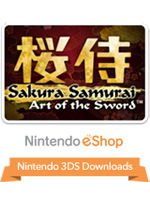
Yes! I was hoping this would be an experience worth playing. I feared it would be cheap (gameplay wise) and lacking in depth. Grabbing it.
Comment by Anonymous — January 30, 2012 @ 6:55 pm
I was worried about the same, very pleasantly surprised.
Comment by Jamie Love — January 30, 2012 @ 9:00 pm
Thanks for the review! Adding the game to my “to buy list”. I’ll be adding $100 in eShop credit to my 3DS in July so I can start purchasing a nice digital backlog hehehe.
Comment by EdEN — January 30, 2012 @ 7:23 pm
wow thats alot of mony man for the e-shop guese there are a ton of good games so might aswell spend your cash
Comment by Ikmisnederland — February 1, 2012 @ 12:37 am
I’m pumped to get this on Thursday!
Comment by Carl — January 31, 2012 @ 3:26 am